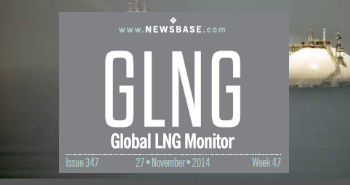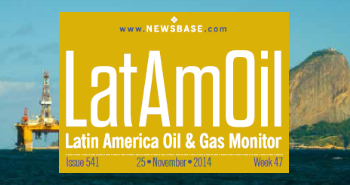High European gas prices don’t erase Trinidad and Tobago’s challenges
Port of Spain’s ability to benefit from current market conditions is constrained by questions about gas supply, production decline and the fate of Atlantic LNG
WHAT: Europe’s gas market crisis is hitting as Trinidad and Tobago attempts to navigate questions about future supplies.
WHY: Atlantic LNG, the country’s only gas liquefaction plant, is heading for shareholder reorganisation.
WHAT NEXT: Proposals for accessing gas from neighbouring Venezuela will not offer a quick fix.
As an established producer of natural gas and LNG, Trinidad and Tobago ought to be in a position to take advantage of recent developments on European gas markets, which are in turmoil as the heating season approaches.
That is, it ought to be able to arrange matters so as to promote itself to European buyers as a reliable supplier of LNG – and, therefore, as an ally and good business contact at a time when concerns about supplies and pricing are acute. Instead, however, Europe’s gas supply woes have erupted at a time when Trinidad and Tobago is facing challenges of its own that constrain its ability to benefit from rising gas demand.
In a general sense, those challenges encompass the fact that the country’s gas output has been dropping for some time and is likely to continue doing so over the long term, as there have not been enough new discoveries to replace depleted fields. And in a more specific and immediate sense, the challenges include questions about the future of Atlantic LNG, the operator of the country’s only gas liquefaction facility.
Given its singular nature, Atlantic LNG is the only thing keeping Trinidad and Tobago in its spot as the world’s sixth-largest supplier of LNG to Europe. It is also the only thing that has enabled the country to increase the share of total LNG exports going to European buyers from 26% in 2021 to 40% in the first half of 2022.
The Atlantic LNG plant has four production trains and a combined total production capacity of 14.8mn tonnes per year (tpy). Each of the trains is owned by a separate group of shareholders and sources feedstock from a different set of gas fields. Shell (UK) is a key shareholder in the plant, as it has a 46% stake in Atlantic LNG’s Train 1, a 57.5% stake in Train 2, a 57.5% stake in Train 3 and a 51.11% stake in Train 4. (Train 1 is currently idle.)
Whither Atlantic LNG?
Atlantic LNG made headlines last week after Prime Minister Keith Rowley revealed that he had met with representatives of Shell and BP (UK), another shareholder in the plant, to discuss future plans.
One of Rowley’s goals was to secure more information about future deliveries of feedstock to the Atlantic LNG plant. The facility’s Train 1 has been offline largely because BP is not producing enough gas to sustain operations, and Port of Spain has been pushing for more clarity on this front for some time.
Shell is currently extracting around 850mn cubic feet (24.07mn cubic metres) per day of gas in Trinidad and Tobago, the highest level recorded since 2016, but there are still questions about the adequacy of feedstock deliveries to Atlantic LNG. These questions have led Rowley’s administration to push for a restructuring of the plant’s shareholder structure – that is, a reapportionment of stakes among the investors in each production train in a way that gave Trinidad and Tobago a consistent share of equity across the entire plant. This share would, presumably, be held by a state-owned entity such as National Gas Co. of Trinidad and Tobago Ltd (NGC).
The prime minister indicated last week that he had discussed restructuring proposals at his meetings with Shell and BP representatives but did not reveal the details of these plans beyond saying that the country would become a stakeholder in Atlantic LNG. Some observers speculated, though, that the reordering would also include reorganisation – that is, the permanent closure of the plant’s Train 1, in a move that would reduce Atlantic LNG’s production capacity from 14.8mn tpy to 11.8mn tpy.
As of press time, Port of Spain had not confirmed or commented on the matter. Rowley did tell the press, though, that the talks with BP and Shell had borne fruit in other ways – specifically, in the form of an agreement on changes to pricing structures. Thus far, he explained, Atlantic LNG has been selling its production at a price linked to US benchmark Henry Hub prices, but it will now be able to set prices according to a basket that references Henry Hub, European and Asian rates. This new arrangement will be more profitable for the country, he said.
Turning to Venezuela?
This shift is good news for Port of Spain, given the current price differentials between US and European gas markets, and it does put the country in a better position to benefit from current conditions on world gas markets. However, it does not address the medium- and long-term problems of how to compensate for declining gas output and maturing fields.
Nevertheless, the Energy Chamber of Trinidad & Tobago pointed out in a blog post earlier this month that at least one possible solution had already been put forward. Rowley and his Energy Minister Stuart Young, along with Guyana’s President Irfaan Ali and officials from other countries in the region, have said they favour proposals for relaxing US sanctions on Venezuela with the aim of allowing the South American state to send its gas to Trinidad via some combination of subsea pipelines and tie-backs connecting their adjacent offshore zones.
Proponents of this plan argue that the scheme would allow Venezuela to reduce associated gas flaring during the development of onshore oilfields, while also enabling the development of offshore gas fields and increasing feedstock deliveries to Atlantic LNG. It’s worth noting, though, that this plan would also face significant hurdles.
One of these hurdles is, of course, the US sanctions regime, which remains largely in place even though President Donald Trump, whose administration did so much to intensify trade restrictions, has been out of office for more than a year and half. Trump’s successor Joe Biden has shown signs of being more amenable to lightening sanctions, but this will take time – and until there is significant movement on this front, it will continue to be difficult to secure large-scale investment in Venezuelan gas projects.
Running out of time?
And that is unfortunate for the plan favoured by Rowley et al., as a great deal of investment will be needed to facilitate gas shipments from Venezuela to Trinidad and Tobago.
The two countries may not be far apart geographically, and their maritime zones may adjoin. They may even share a major asset – namely, a sizeable gas field known alternately as Loran and Manatee. But Venezuela’s oil and gas sector is not in the best condition, and existing production and transportation infrastructure will not be able to send gas from onshore fields to the neighbouring island state without extensive rehabilitation and repairs.
Meanwhile, Venezuela has little in the way of offshore gas infrastructure, so investors would have to set it all up. These processes would be expensive, and they would take time.
The question is whether they will take more time than Trinidad and Tobago has. Rowley recently raised the alarm about this issue, saying that the country’s gas output was likely to drop in the second half of the decade unless the government found a way to gain greater influence over development strategy.
“[If] we do not make decisions ... the diagram shows that by 2026, 2027, 2028 the levels of gas that will be available in Trinidad and Tobago – if no new improvements are [made] – will have far-reaching consequences for government revenues and, I dare say, for the quality of life of all the people of Trinidad and Tobago,” he said, according to a report from OilNOW.gy.




Follow us online